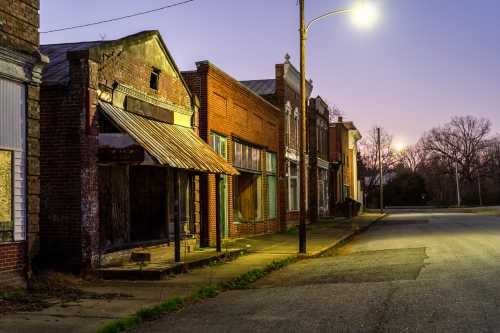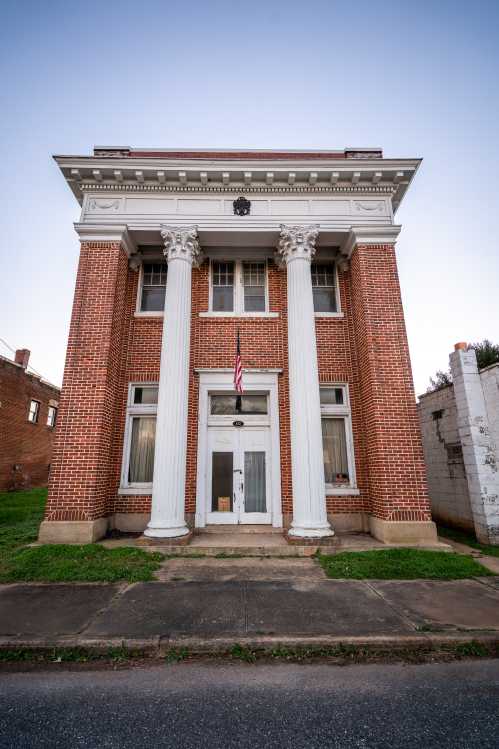While "The Night of Terror" sounds like a roadside haunted attraction suited to Halloween, it actually refers to a series of horrific events that happened at the Lorton Prison in Fairfax County nearly a century ago. The name may be straight from the pages of a horror novel, but the events of November 15, 1917, were very real, indeed. And more than aptly named. It turns out that the rumored haunted Lorton Reformatory has a more bone-chilling history than any horror film.
Today, the Lorton Reformatory's cells and echoing hallways sit empty and decaying. But once, this prison was the site of overcrowding, horrible conditions, and at least one haunting story of cruelty and abuse. Prisons and asylums at the turn of the century had horrible reputations for being ridden with abuse and at times, straight up murder. Lorton prison was no different.
Originally called the Occoquan Workhouse, the prison was built in 1910 as an "industrial farm." The "farm" or "workhouse," was an experiment in prison reform designed to test the use of hard manual labor as an appropriate rehabilitation method for medium security prisoners.
The original workhouse was built by the prisoners themselves, using bricks made on-site. Though perhaps less traumatic in theory than being locked in a cell or tortured for your crimes, the concept of a workhouse does still seem like a brutal way to serve time.
Soon after, in 1912, a women's workhouse opened nearby, housing inmates charged with prostitution, disorderly conduct, or drunkenness. The women oversaw laundry and performed other labors around the prison grounds as they served their sentences. However, on November 14 and 15, 1917, a different, and more inhumane form of punishment was used when thirty-three women, known as the Silent Sentinels, endured unspeakable torture and abuse at the hands of more than 40 prison officials and guards.
Beginning as early as June 1917, the Silent Sentinels had been picketing for women's voting rights outside the White House in Washington, D.C. The women were members of the National Woman's Party, led by Alice Paul and Lucy Burns, and despite earlier arrests, continued their brave vigils. Finally, on the night of November 14, they were arrested, once again, and taken to Lorton Reformatory, where notorious warden W.H. Whitaker met them with cruel and swift retribution.
According to a report by the Detroit Newstime, the women were chained and beaten, some by having their heads smashed into iron bed frames, and one woman, a 74-year old suffragette, was stabbed with part of her broken picketing banner. Why it was women's rights that so enraged the prison workers rather than a more violent crime, we can't be sure. But it's incredibly discouraging.
Protest leader Lucy Burns, shown here during her time at the Occoquan Workhouse in 1917, was left with her arms handcuffed to a bar above her head overnight, only to be stripped and left in a freezing cell the following day.
Alice Paul, another prominent figure in the women's rights movement, shown here c. 1915, attempted a hunger strike as a means of protesting the vicious treatment of the women, but was soon force-fed raw eggs through a tube that had been forced down her throat.
The women were served rancid food and endured ongoing abuse until their release two weeks later. Even in this picture of the prison's "modern" kitchen, it's easy to imagine the state of the food and care given to the women.
Unfortunately for the prison workers, their abuse of the suffragettes had the opposite effect. Those women may have suffered but it worked out well for the greater good. As word of their suffering spread, more and more men AND women joined the cause, eventually leading to the 19th Amendment being passed in 1919, officially granting women the right to vote.
The Lorton Reformatory carried on as a prison for nearly 90 years after the Night of Terror. At the start of the Cold War in the 1950s, Lorton was chosen as the nation's NIKE missile complex and remained the site of a missile bunker until 1974.
There are many other notable inmates who spent time at Lorton and their stories are not nearly so harrowing as those of the suffragettes. Musician Chuck Brown did a paltry 8 years for murder at Lorton prison in the 1950s and said he found good support for his music there and that it had truly contributed to his rehabilitation. Ralph Waldo "Petey" Greene Jr. was at the prison in the 1960s and worked at the prison radio. He went on to be a lifelong radio host after his release.
Lorton even hosted visitors like Ella Fitzgerald, Frank Sinatra, and Count Basie, who performed a jazz festival at the prison in 1965. It certainly wasn't all sunshine and roses at Lorton prison, but the experience of the suffragettes was particularly abusive and harrowing out of the records we have from inmates who spent time there.
With time, Lorton Reformatory, or Lorton Prison, became known for its deplorable conditions and severe overcrowding, before finally closing in 2001 when the last prisoners were transferred to other facilities.
For many years, Lorton Reformatory's cells and prison hallways could be seen in crumbling decay, as time eroded the prison bars and grounds.
But surely, even then, the spirit of the brave women who stood so proudly for what they believed could be felt in the dank prison halls. Even as the cells and dormitories stood empty, the voices of equality and justice must have filled the air just as women like Alice Paul and Lucy Burns intended.
Through these beautifully captured images, we can see how even times of hardship and struggle can lead to some of the fiercest victories in history.
Today, the Workhouse Prison Museum offers exhibits and historical displays that recall the prison's century-old history, both for what it was intended and how it went horribly wrong. As part of renovations to the facility, a world-class art facility was opened in 2008. The Workhouse Arts Center also features six artist studios, galleries, a theatre, the Metropolitan School of the Arts, and many other spaces dedicated to the development of artistic education, creation, and display. Visitors to the site are encouraged to interact with the resident artists and participate in the many performing arts opportunities available, including theater, film, music, and dance.
Nearby, the maximum security facility that was once part of the larger prison system is being reclaimed as "Laurel Crest," a mixed-use development with businesses, apartments, and homes. To learn about the ongoing transformation of Laurel Crest, you can visit the Fairfax County Government website.
Were you already familiar with the Lorton Prison Reformatory? We would love to hear your thoughts on the "Lorton Prison of Terror" in the comments below!
Curious for more haunted Virginia eeriness? If some spooky fall thrills are calling your name, check out this haunted day trip in Virginia. Then add a haunted tour to your seasonal to-do list!
Subscribe to our newsletter
Get the latest updates and news
Thank you for subscribing!























